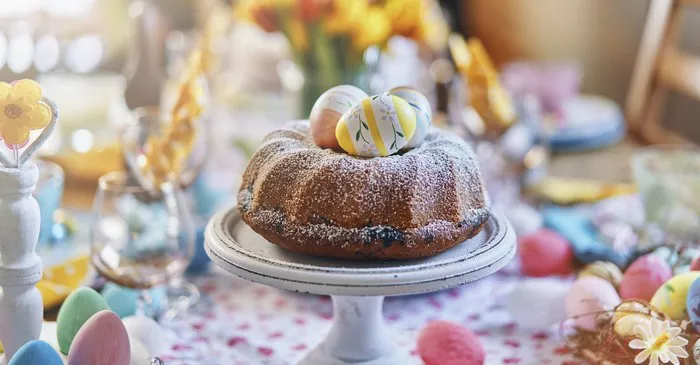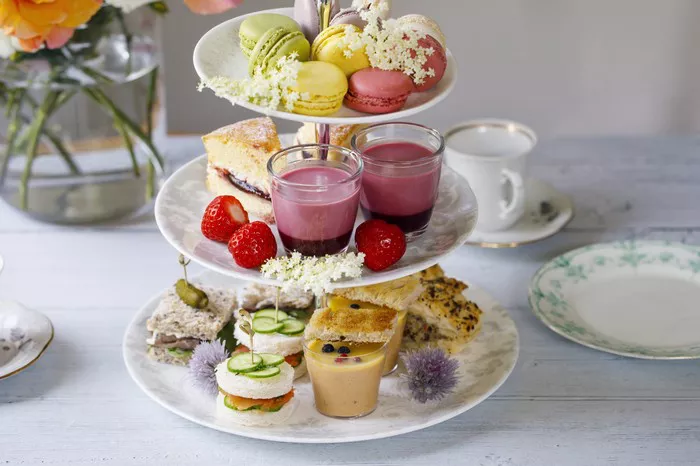Easter is a time of celebration and renewal, marked by a variety of cultural and culinary traditions around the world. As families gather to commemorate this holiday, a delectable array of desserts takes center stage. From sweet breads to symbolic treats, Easter desserts reflect the diversity of cultures and the joy of the season. Let’s delve into the delightful world of traditional Easter desserts and the stories they tell.
1. Hot Cross Buns: A Symbol of Faith
Hot Cross Buns are a quintessential Easter treat with a history dating back centuries. These spiced and slightly sweetened buns are adorned with a cross made of icing or pastry. The cross symbolizes Christ’s crucifixion, and the spices represent the spices used to embalm him. In many cultures, Hot Cross Buns are enjoyed on Good Friday, making them a staple of Easter observance.
2. Simnel Cake: A Fruit-Filled Tradition
Simnel Cake is a rich fruit cake adorned with marzipan and toasted under a grill or broiler to achieve a golden hue. This dessert carries dual significance: it celebrates the end of Lent by including indulgent ingredients like dried fruits and marzipan, and it marks the reunification of families on Easter Sunday. Eleven marzipan balls on top represent Jesus’ disciples, excluding Judas.
3. Pashka: Russian Easter Cream Cheese Dessert
Pashka, a traditional Russian Easter dessert, resembles a pyramid and is made from a mixture of cream cheese, butter, eggs, dried fruits, and nuts. It is typically flavored with vanilla and topped with a cross. Pashka is a symbol of the tomb of Christ, and its sweet and creamy texture embodies the joy of Christ’s resurrection. It is often served with kulich, a sweet Easter bread.
4. Colomba Pasquale: Italy’s Easter Dove
In Italy, Colomba Pasquale, or Easter Dove, is a cake that takes the shape of a dove, representing peace and the Holy Spirit. This soft and fragrant cake is enriched with butter, candied peel, and sometimes even chocolate chips. It’s generously topped with a crunchy almond glaze. Colomba Pasquale is enjoyed throughout Italy, often accompanied by family gatherings and festive meals.
5. Malva Pudding: South African Sweetness
While not traditionally associated with Easter worldwide, Malva Pudding has become a popular Easter dessert in South Africa. This warm and sticky dessert is similar to a British sticky toffee pudding and is often served with custard or vanilla ice cream. Its sweet and comforting flavors make it a cherished treat during Easter celebrations in the Southern Hemisphere.
6. Pinca: Croatian Sweet Bread
Pinca, a traditional Croatian Easter sweet bread, is enriched with ingredients like eggs, butter, and candied citrus peel. The bread is often braided and shaped into a round loaf with a cross on top. Pinca is enjoyed during the Easter breakfast or brunch and is shared among family and friends. It symbolizes the breaking of bread and the resurrection of Christ.
7. Capirotada: Mexican Bread Pudding
Capirotada is a Mexican bread pudding that holds deep religious and cultural significance during Lent and Easter. Layers of bread, cheese, dried fruits, and nuts are soaked in a sweet syrup made from piloncillo (unrefined sugar) and flavored with cinnamon and cloves. The dish’s ingredients are symbolic: the bread represents the body of Christ, the syrup is his blood, and the other elements embody the Passion of Christ.
8. Tarta de Santiago: Spanish Almond Cake
Tarta de Santiago is a traditional Spanish dessert hailing from the region of Galicia. This almond cake is gluten-free, as it relies on ground almonds for its base. It is adorned with the St. James Cross, which is created using powdered sugar. This cross symbolizes the pilgrimage to Santiago de Compostela, where the remains of the apostle St. James are believed to rest.
9. Babka: Eastern European Twist on Sweet Bread
Babka is a sweet bread that originated in Eastern Europe, with variations found in countries like Poland and Ukraine. The dough is enriched with eggs and butter and often includes ingredients like raisins, nuts, or chocolate chips. Babka’s distinctive shape resembles a twisted loaf or a tall round cake. It’s a delightful centerpiece for Easter brunches and gatherings.
10. Mona de Pascua: Spanish Easter Cake
Mona de Pascua, a Spanish Easter cake, varies in appearance and flavor across different regions of Spain. It can be a round cake or a loaf-shaped bread, often adorned with hard-boiled eggs that have been dyed or decorated. The eggs symbolize rebirth and fertility. This festive cake is commonly enjoyed on Easter Monday during family outings and picnics.
Conclusion
Easter desserts are a testament to the cultural and religious diversity that defines this holiday. From the iconic Hot Cross Buns symbolizing Christ’s sacrifice to the sweet and nutty Tarta de Santiago celebrating pilgrimage, each dessert tells a unique story that reflects the traditions and beliefs of different communities. As families gather to celebrate Easter, these traditional desserts serve as a delicious reminder of the joy, hope, and renewal that the holiday embodies. Whether you’re savoring a slice of Simnel Cake or delighting in a piece of Pashka, these treats connect us to a global tapestry of flavors, rituals, and the spirit of Easter.
























